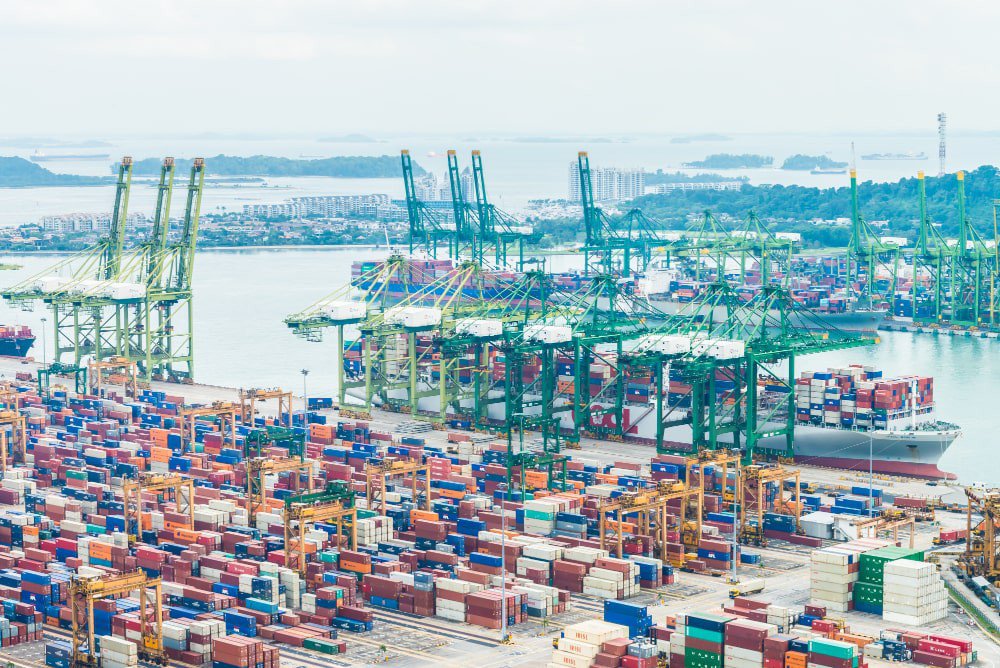
The Chattogram Port, one of the busiest maritime gateways in Bangladesh, is experiencing a significant downturn in container deliveries due to the ongoing political unrest. This decline, which has caught the attention of both domestic and international stakeholders, underscores the vulnerability of supply chains in the face of socio-political instability. Officials report that the primary issue is a transportation crisis, with drivers and transport owners increasingly hesitant to operate amid the volatile conditions.
This growing reluctance among transport workers is driven by heightened safety concerns, as vehicles have become targets during protests. Importers now face substantial challenges in ensuring the timely delivery of goods, compounding the logistical difficulties.
Impact of Political Unrest on Port Operations
The current political unrest in Bangladesh has created a ripple effect across various sectors, with the logistics and shipping industries bearing the brunt. Strikes, blockades, and disruptions in transportation networks have severely hampered the movement of goods to and from Chattogram Port. As a result, the port, which handles around 90% of Bangladesh's seaborne trade, is facing unprecedented delays and a backlog of undelivered containers.
This decline in efficiency at Chattogram Port is not just a local issue but one that has far-reaching consequences. The port is a critical node in the global supply chain, especially for the textile and garment industries, which rely heavily on timely shipments. The delay in container deliveries has caused disruptions in manufacturing schedules, leading to missed deadlines and financial losses for businesses dependent on exports.
Data Insights: Quantifying the Decline
Recent data reveals a sharp decline in container throughput at Chattogram Port. The volume of containers handled by the port in the last quarter dropped by approximately 15%, a significant decrease compared to the same period last year. This decline is primarily attributed to the political unrest, which has disrupted the logistics chain, causing delays in the clearance of goods and the delivery of containers to their final destinations.
The congestion at the port has reached critical levels, with container dwell times increasing by 25%. This means that containers are staying at the port for extended periods before being cleared, further exacerbating the backlog. The slow movement of goods has also led to a shortage of containers, as the turnaround time for empty containers returning to the port has increased.
Stakeholder Responses and Mitigation Measures
In response to the growing crisis, the Chattogram Port Authority (CPA) has implemented several measures to mitigate the impact. These include extending port operating hours, prioritizing the clearance of perishable goods, and coordinating with transportation companies to ensure the swift movement of containers.
However, these measures have only provided temporary relief. The long-term resolution of the issue hinges on the restoration of political stability in Bangladesh. Until then, businesses and shipping companies are likely to face continued challenges in their operations.
Global Implications and Future Outlook
The ongoing unrest in Bangladesh and its impact on Chattogram Port has highlighted the fragility of global supply chains. As businesses increasingly rely on just-in-time delivery models, any disruption in the supply chain can have cascading effects on global trade.
For countries and companies dependent on imports and exports through Chattogram Port, contingency plans are being developed. These include diversifying supply chains, exploring alternative shipping routes, and increasing inventory levels to buffer against delays.
Looking ahead, the future of Chattagram Port's operations will largely depend on the political climate in Bangladesh. While the port authority continues to navigate these challenges, the broader logistics and shipping industries must adapt to the new normal of uncertainty and unpredictability.
Conclusion
The decline in container deliveries at Chattogram Port due to ongoing political unrest is a stark reminder of the interconnectedness of global trade and the importance of stable political environments. As the situation evolves, it will be crucial for stakeholders to stay informed and proactive in managing the risks associated with such disruptions.





 Get instant quote
and compare offers in real time
Get instant quote
and compare offers in real time